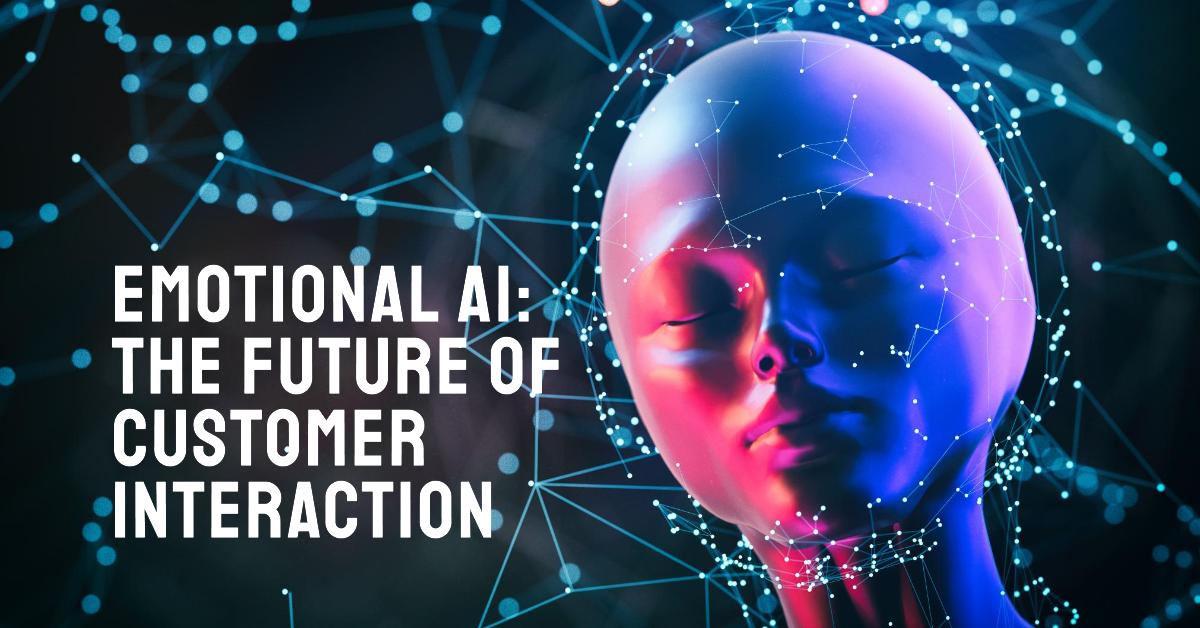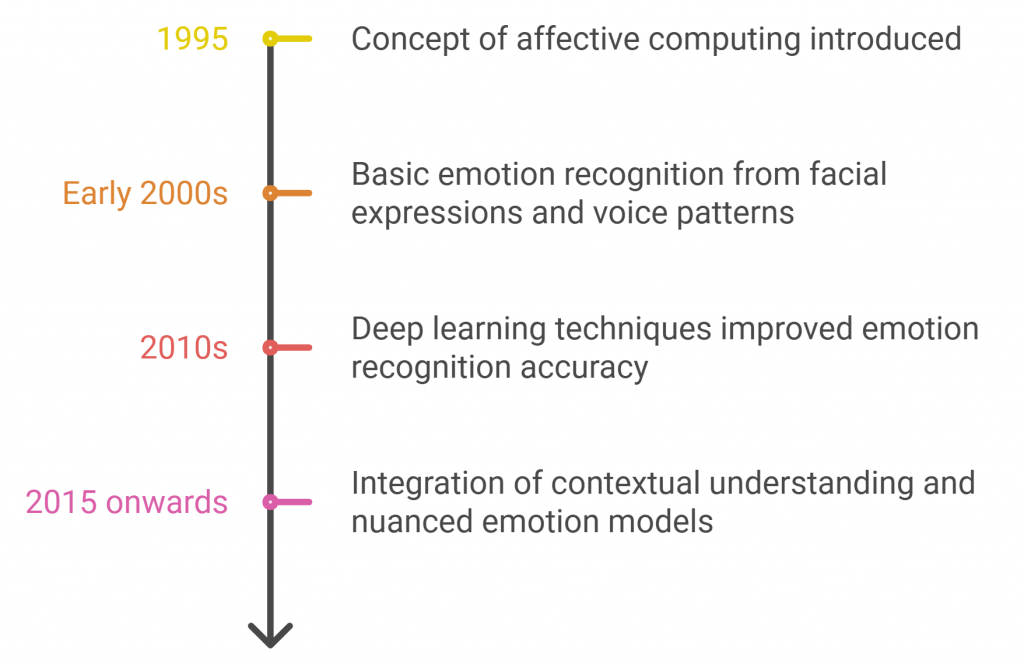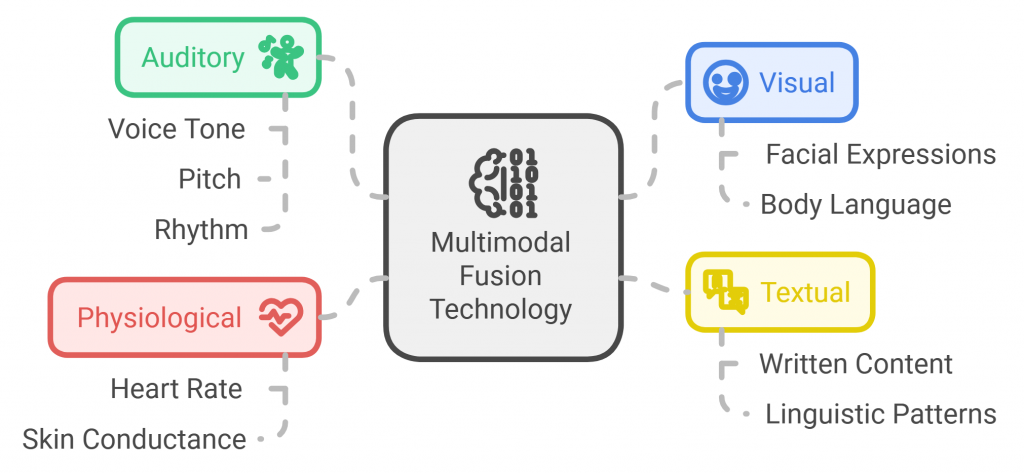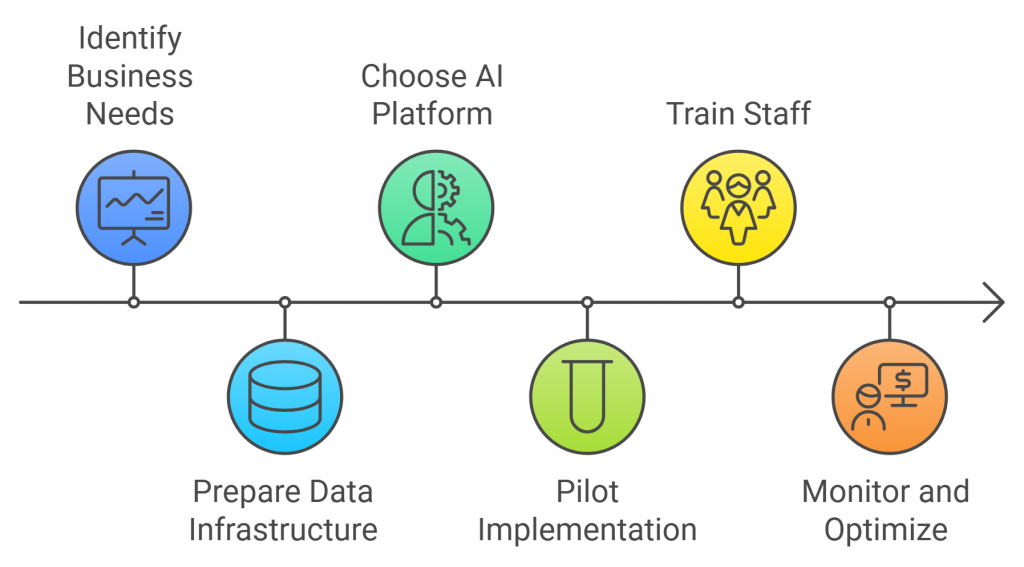Discover how emotional AI is transforming the way businesses connect with their customers. In this comprehensive guide, we’ll explore the cutting-edge technology that’s enabling machines to recognize, interpret, and respond to human emotions in real-time. From enhancing customer satisfaction to boosting operational efficiency, you’ll learn why emotional AI is becoming an essential tool for forward-thinking companies. We’ll also delve into the challenges, future trends, and practical steps for implementing this game-changing technology in your business.
What is Emotional AI?
Emotional AI, or affective computing, is a branch of artificial intelligence that focuses on the development of systems and devices that can recognize, interpret, process, and simulate human emotions. At its core, emotional AI aims to bridge the emotional intelligence gap between humans and machines, enabling more natural and effective human-computer interactions.

The science behind affective computing is rooted in psychology, neuroscience, and computer science. It draws upon our understanding of human emotions and how they’re expressed, combining this knowledge with advanced machine learning algorithms to create systems that can detect and respond to emotional cues.
Key components of emotional AI include:
😊 Facial Expression Analysis
Using computer vision and deep learning techniques, emotional AI systems can analyze facial expressions to detect emotions. This involves identifying key facial landmarks and their movements, which are then mapped to emotional states.
🎙️ Voice Analysis
By examining various aspects of speech such as tone, pitch, rhythm, and volume, emotional AI can discern emotions from vocal patterns. This is particularly crucial for voice-based interactions, such as those powered by MissNoCalls’ advanced AI voicemail and customer service AI solutions.
📝 Text Sentiment Analysis
Natural Language Processing (NLP) techniques are employed to analyze the emotional content of written text. This involves understanding context, identifying emotional keywords, and interpreting nuances like sarcasm or humor.
📈 Physiological Signals
Some advanced emotional AI systems also incorporate data from physiological signals such as heart rate, skin conductance, or brain activity to gain deeper insights into emotional states.
By combining these components through multimodal fusion technology, emotional AI systems can achieve a more comprehensive and accurate understanding of human emotions, enabling more nuanced and appropriate responses in various contexts.
The Evolution of Emotional AI

The concept of affective computing was first introduced by MIT professor Rosalind Picard in 1995. In her seminal work, Picard proposed that computers should have the ability to recognize and express emotions, arguing that emotional intelligence is essential for truly effective human-computer interaction.
Since its inception, emotional AI has undergone significant evolution, driven by advancements in machine learning, computer vision, and natural language processing:

- Early 2000s: Initial research focused on basic emotion recognition from facial expressions and voice patterns. Systems were limited in accuracy and could only detect a handful of primary emotions.
- 2010s: The rise of deep learning techniques led to substantial improvements in emotion recognition accuracy. Multimodal approaches began to emerge, combining data from various sources for more robust emotion detection.
- 2015 onwards: Integration of contextual understanding and more nuanced emotion models. Development of real-time emotion analysis systems for practical applications in fields like customer service, marketing, and healthcare.
Recent advancements in machine learning and NLP have further propelled the field of emotional AI:
- Transfer Learning: Allowing models trained on large datasets to be fine-tuned for specific emotional AI tasks, improving performance and reducing the need for extensive labeled data.
- Transformer Models: Enhancing the ability to understand context in text, leading to more accurate sentiment analysis and emotion detection in written communication.
- Generative AI: Enabling more natural and emotionally appropriate responses in AI-driven conversations.
The current state of emotional AI technology is characterized by its increasing accuracy, real-time processing capabilities, and integration into various business applications. Companies like MissNoCalls are at the forefront of this revolution, incorporating emotional AI into their Customer Service AI and Sales Call AI solutions to provide more empathetic and effective customer interactions.
As emotional AI continues to evolve, we can expect even more sophisticated systems that can understand and respond to complex emotional states, adapt to individual and cultural differences, and seamlessly integrate into our daily lives and business operations.
How Emotional AI Works

Emotional AI leverages advanced technologies to detect, interpret, and respond to human emotions in real-time. Let’s delve into the key components that make this possible:
Multimodal Fusion Technology

At the heart of sophisticated emotional AI systems lies multimodal fusion technology. This approach combines data from multiple sources or “modes” to achieve a more accurate and comprehensive understanding of emotions. The primary modes include:
- Visual: Facial expressions and body language
- Auditory: Voice tone, pitch, and rhythm
- Textual: Written content and linguistic patterns
- Physiological: Heart rate, skin conductance, and other biometric data (in some advanced systems)
By integrating these diverse data streams, emotional AI can capture the nuances of human emotion that might be missed by analyzing a single mode alone. For instance, a person’s voice might sound calm, but their facial expression could reveal underlying stress or anxiety.
Emotion Recognition Techniques
Emotional AI employs a variety of techniques to recognize and classify emotions:
- Facial Expression Analysis: Using computer vision and deep learning algorithms, AI systems analyze facial landmarks and their movements to identify emotions. This involves detecting micro-expressions and mapping them to emotional states.
- Voice Emotion Recognition: By examining acoustic features such as pitch, tempo, and energy, AI can discern emotions from speech. This is particularly crucial for voice-based interactions, like those powered by MissNoCalls’ AI voice bots.
- Natural Language Processing (NLP): For text-based communications, NLP techniques are used to analyze sentiment and emotion. This includes understanding context, identifying emotional keywords, and interpreting nuances like sarcasm or humor.
- Machine Learning Models: Advanced machine learning models, including deep neural networks, are trained on large datasets of emotional expressions to recognize patterns and make accurate predictions.
Real-time Emotional Feedback Systems
To be truly effective, emotional AI must operate in real-time, providing immediate insights and enabling dynamic responses. Real-time emotional feedback systems involve:
- Continuous Monitoring: Constantly analyzing incoming data streams for emotional cues.
- Rapid Processing: Utilizing high-performance computing to analyze data and make predictions within milliseconds.
- Adaptive Responses: Adjusting AI behavior or outputs based on detected emotions, allowing for more empathetic and context-appropriate interactions.
These systems enable applications like MissNoCalls’ Customer Service AI to adapt their responses instantly based on a customer’s emotional state, ensuring more effective and satisfying interactions.
Emotional AI Accuracy Rates by Input Type
| Input Type | Basic Emotions Accuracy | Complex Emotions Accuracy | Cultural Variance | Real-time Processing |
|---|---|---|---|---|
| Facial Expressions | 90% | 75% | Medium | High |
| Voice Analysis | 85% | 70% | Low | High |
| Text Analysis | 80% | 65% | Low | Very High |
| Physiological Signals | 95% | 85% | Very Low | Medium |
| Multimodal Fusion | 93% | 80% | Medium | Medium-High |
Applications of Emotional AI in Customer Interaction

Emotional AI is revolutionizing customer interaction across various industries. Here are some key applications:
Customer Service Enhancement
Emotional AI is transforming customer service by enabling more empathetic and efficient interactions:
- Intelligent Routing: Analyzing customer emotions to direct them to the most suitable agent or support channel.
- Empathetic Responses: Enabling AI chatbots and voice bots to adjust their tone and content based on the customer’s emotional state.
- Real-time Agent Assistance: Providing human agents with emotional insights to help them respond more effectively to customer needs.
MissNoCalls’ Customer Service AI leverages these capabilities to ensure that businesses never miss an opportunity to connect with their customers on an emotional level.
Personalized Marketing and Advertising
Emotional AI is helping marketers create more engaging and effective campaigns:
- Emotion-based Ad Targeting: Tailoring advertisements based on the viewer’s emotional response.
- Content Optimization: Analyzing emotional responses to different content types to refine marketing strategies.
- Brand Sentiment Analysis: Monitoring overall emotional reactions to brand messaging across various channels.
Sales Optimization
In the sales domain, emotional AI is proving to be a game-changer:
- Emotion-driven Lead Scoring: Prioritizing leads based on their emotional engagement with the brand.
- Sales Call Analysis: Providing insights into customer emotions during sales calls to improve conversion rates.
- Personalized Sales Approaches: Tailoring sales pitches based on the prospect’s emotional state and preferences.
MissNoCalls’ Sales Call AI incorporates these features to help businesses boost their sales efforts and close more deals.
Mental Health Support
While primarily a healthcare application, businesses are increasingly recognizing the importance of employee mental health:
- Early Detection: Identifying signs of stress, anxiety, or depression through voice and text analysis.
- Emotional Support Chatbots: Providing initial support and resources for mental health concerns.
- Workplace Wellness Monitoring: Analyzing overall employee sentiment to improve workplace conditions and productivity.
Emotional AI Market Growth by Industry
| Industry | 2023 Market Size (USD Billions) | Projected 2028 Market Size (USD Billions) | CAGR |
|---|---|---|---|
| Healthcare | 0.8 | 3.2 | |
| Retail | 1.2 | 4.5 | |
| Finance | 0.9 | 3.8 | |
| Automotive | 0.5 | 2.1 | |
| Education | 0.3 | 1.5 |
MissNoCalls’ Approach to Emotional AI

At MissNoCalls, we’ve made emotional AI a cornerstone of our innovative communication solutions. Here’s how we’re leveraging this technology to transform customer interactions:
Integration of Emotional AI in Voice Bots
Our advanced AI voice bots are equipped with state-of-the-art emotional AI capabilities:
🔍 Real-time Emotion Detection
Analyzing voice patterns to identify customer emotions during calls.
🎛️ Adaptive Responses
Adjusting the bot’s tone, pace, and content based on the detected emotional state.
👥 Emotional Escalation
Seamlessly transferring calls to human agents when complex emotional situations arise.
This integration ensures that our voice bots can handle customer interactions with the empathy and nuance typically associated with human agents.
Customization for Business Needs
We understand that every business has unique communication challenges. That’s why we offer highly customizable emotional AI solutions:
🏥 Industry-specific Training
Fine-tuning our emotional AI models for different sectors, from healthcare to finance.
🎯 Brand Voice Alignment
Ensuring that our AI’s responses align with each client’s brand personality and communication style.
🔗 Integration Flexibility
Seamlessly incorporating our emotional AI technology into existing customer service platforms and CRM systems.
Real-world Success Stories
Our emotional AI-powered solutions have delivered tangible results for businesses across various industries:
- E-commerce Giant: Implemented our Customer Service AI, resulting in a 30% increase in customer satisfaction scores and a 25% reduction in call handling times.
- Healthcare Provider: Utilized our voice bots with emotional AI to triage patient calls, leading to a 40% improvement in urgent care response times and increased patient trust.
- Financial Services Firm: Deployed our Sales Call AI, resulting in a 35% boost in lead conversion rates and a 20% increase in customer retention.
These success stories demonstrate the transformative power of emotional AI when applied thoughtfully to customer interactions. At MissNoCalls, we’re committed to helping businesses harness this technology to create more meaningful, efficient, and satisfying customer experiences.
Benefits of Emotional AI for Businesses

Implementing emotional AI in business operations can yield significant advantages:
Improved Customer Satisfaction
By enabling more empathetic and personalized interactions, emotional AI significantly enhances customer satisfaction:
- Personalized Experiences: Tailoring responses and recommendations based on the customer’s emotional state.
- Faster Resolution: Identifying and addressing customer frustrations more quickly and effectively.
- 24/7 Emotional Support: Providing emotionally intelligent responses at any time, enhancing the overall customer experience.
Enhanced Decision-Making
Emotional AI provides valuable insights that can inform better business decisions:
- Customer Insights: Gathering deeper understanding of customer preferences and pain points.
- Product Development: Using emotional feedback to guide product improvements and innovations.
- Marketing Strategies: Refining campaigns based on emotional responses to different messages and content.
Increased Operational Efficiency
By automating and optimizing emotionally intelligent interactions, businesses can achieve significant efficiencies:
- Reduced Handle Times: Resolving customer issues more quickly through emotionally appropriate responses.
- Improved First Contact Resolution: Addressing the root of customer concerns more effectively.
- Optimized Resource Allocation: Directing human resources to where they’re most needed based on emotional complexity.
Competitive Advantage in the Market
Businesses leveraging emotional AI can differentiate themselves in crowded markets:
- Enhanced Brand Perception: Demonstrating empathy and understanding through AI-driven interactions.
- Innovative Customer Experiences: Offering unique, emotionally intelligent services that set the brand apart.
- Rapid Adaptation: Quickly adjusting to changing customer needs and emotions in dynamic markets.
Comparison of Emotional AI Implementation Methods
| Implementation Method | Time to Deploy | Initial Cost | Customization Level | Integration Complexity |
|---|---|---|---|---|
| Off-the-shelf Solution | 1-3 months | Low-Medium | Low | Low |
| Custom Development | 6-12 months | High | High | Medium-High |
| Hybrid Approach | 3-6 months | Medium | Medium-High | Medium |
| AI-as-a-Service | 1-2 months | Low | Medium | Low-Medium |
Challenges and Limitations of Emotional AI

While emotional AI offers numerous benefits, it also faces several challenges:
Accuracy in Detecting Complex Emotions
- Nuanced Emotions: Difficulty in accurately identifying and responding to complex or mixed emotional states.
- Context Dependency: Emotions can be highly context-dependent, making interpretation challenging for AI systems.
- Individual Variations: People express emotions differently, which can lead to misinterpretation.
Cross-Cultural Emotional Recognition
- Cultural Differences: Emotions are expressed and interpreted differently across cultures, presenting challenges for global businesses.
- Language Barriers: Emotional nuances in different languages can be difficult for AI to accurately translate and interpret.
- Gesture and Expression Variations: Non-verbal cues vary significantly across cultures, complicating visual emotion recognition.
Ethical Considerations and Privacy Concerns
- Data Privacy: Collecting and analyzing emotional data raises significant privacy concerns.
- Informed Consent: Ensuring users are aware of and consent to emotional AI analysis.
- Potential for Manipulation: The risk of using emotional insights for manipulative purposes in marketing or sales.
- Bias in AI Systems: Ensuring emotional AI systems are free from gender, racial, or cultural biases.
Implementing Emotional AI in Your Business

Ready to harness the power of emotional AI? Here’s how to get started:
Steps to Integrate Emotional AI

- Assess Your Needs: Identify areas in your business where emotional AI can have the most impact.
- Data Preparation: Ensure you have the necessary data infrastructure to support emotional AI systems.
- Choose the Right Solution: Select an emotional AI platform that aligns with your business goals and technical requirements.
- Pilot Implementation: Start with a small-scale implementation to test and refine the system.
- Staff Training: Educate your team on how to work alongside and leverage emotional AI technologies.
- Continuous Monitoring and Optimization: Regularly assess the performance of your emotional AI system and make necessary adjustments.
Choosing the Right Emotional AI Solution
When selecting an emotional AI platform, consider the following factors:
- Accuracy and Reliability: Look for solutions with proven track records in emotion recognition.
- Customization Options: Ensure the platform can be tailored to your specific industry and business needs.
- Integration Capabilities: Check compatibility with your existing systems and software.
- Scalability: Choose a solution that can grow with your business.
- Ethical Standards: Opt for providers committed to responsible AI practices.
MissNoCalls’ Offerings and Support
At MissNoCalls, we offer comprehensive emotional AI solutions tailored to your business needs:
- Customizable AI Voice Bots: Harness the power of emotional AI in your customer interactions.
- Seamless Integration: Our solutions integrate smoothly with your existing CRM and communication systems.
- Ongoing Support: We provide continuous technical support and regular updates to ensure optimal performance.
- Training and Consultation: Our experts offer training for your team and strategic consultation to maximize the benefits of emotional AI.
Learn more about our emotional AI solutions at MissNoCalls.
Conclusion
Emotional AI is revolutionizing the landscape of customer interaction, offering unprecedented opportunities for businesses to connect with their customers on a deeper, more meaningful level. By harnessing the power of affective computing, companies can significantly enhance customer satisfaction, streamline operations, and gain a competitive edge in an increasingly emotion-driven market.
As we’ve explored in this article, the benefits of emotional AI are vast, ranging from improved customer experiences to data-driven decision-making. However, it’s crucial to approach this technology with an awareness of its challenges, particularly in areas of accuracy, cross-cultural application, and ethical considerations.
The future of emotional AI is bright, with emerging trends and new applications promising to further transform how businesses communicate and operate. At MissNoCalls, we’re excited to be at the forefront of this revolution, continuously innovating to bring you the most advanced, ethical, and effective emotional AI solutions.
Are you ready to take your customer interactions to the next level with emotional AI? Don’t let this opportunity pass you by. Explore how MissNoCalls can help you implement cutting-edge emotional AI solutions tailored to your business needs. Contact us today to learn more about how we can help you never miss a call – or an emotional connection – again.
Get started with MissNoCalls’ emotional AI solutions.
Frequently Asked Questions
How does emotional AI handle sarcasm and irony in customer interactions?
Emotional AI uses context-aware algorithms to detect sarcasm and irony. These advanced systems analyze linguistic patterns, tone of voice, and situational context to differentiate between literal and non-literal language use, although accuracy can still be challenging in highly nuanced situations.
Can emotional AI be integrated with existing customer relationship management (CRM) systems?
Yes, emotional AI can be integrated with existing CRM systems. Most modern emotional AI solutions offer APIs and integration tools that allow seamless connection with popular CRM platforms, enabling businesses to enhance their customer data with emotional insights.
How does emotional AI address potential biases in emotion recognition across different demographics?
Emotional AI addresses potential biases through diverse training datasets and continuous calibration. Developers use representative data from various demographics in the AI training process and implement regular bias audits to ensure fair and accurate emotion recognition across different age groups, ethnicities, and genders.
What measures are in place to protect customer privacy when using emotional AI in business communications?
Emotional AI systems implement strict data protection measures to safeguard customer privacy. These typically include data anonymization, encryption of sensitive information, compliance with data protection regulations like GDPR, and providing customers with clear opt-in/opt-out options for emotional analysis during interactions.
How does the cost of implementing emotional AI compare to traditional customer service solutions?
The cost of implementing emotional AI varies depending on the scale and complexity of the solution. While initial implementation costs may be higher than traditional customer service solutions, emotional AI often provides long-term cost savings through increased efficiency, reduced human error, and improved customer retention, potentially offering a higher return on investment over time.








